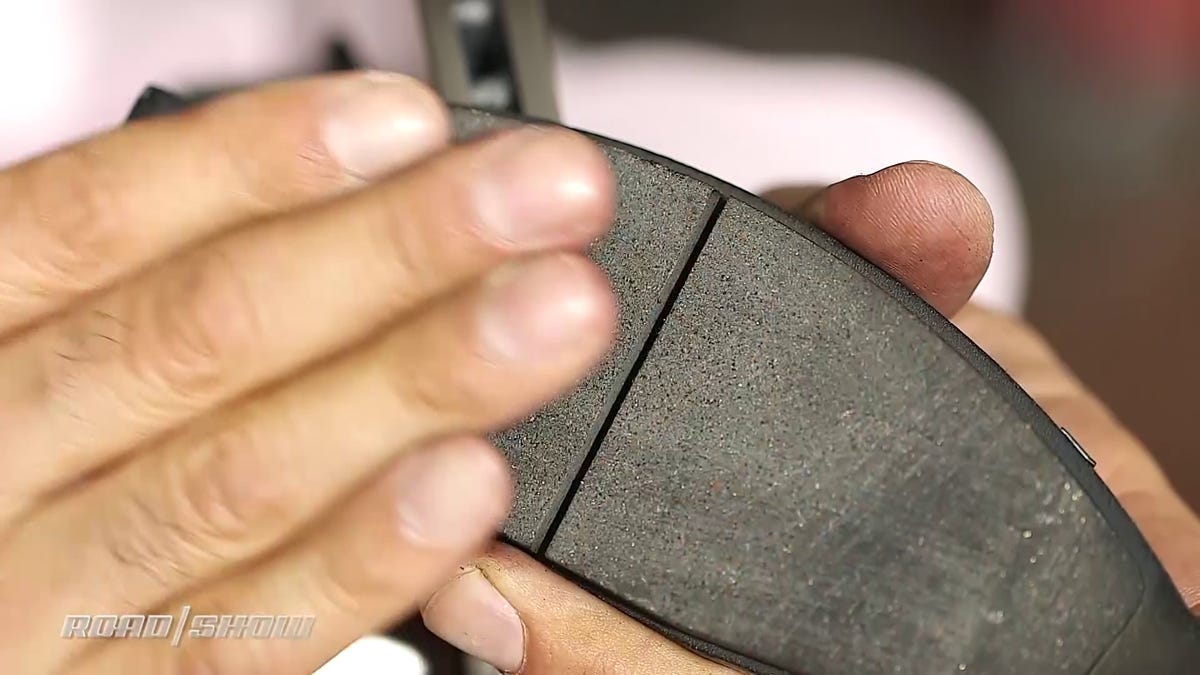 Why You Can Trust CNET
Why You Can Trust CNET How to keep brake dust off your wheels
Choose the right brake pads for the easiest cleaning.

Disc brakes do everything better than old drum brakes except keep your wheels clean. To keep your wheels free of dark grime, you need to make two key decisions.
Choose the right brake pads
The most common pads today are so-called "ceramic" pads. They don't look like ceramic, but they are composed primarily of ceramic particles in pad formulation. That compares with old pads that were made of asbestos fibers (we don't go there any more) or high-performance pads made mostly of metal particles, but they can be noisy and dirty in their pursuit of high performance braking.
Ceramic brake pads (l) and metallic brake pads (r) don't look like either of their namesake materials.
Ceramic brake pads tend to throw off less dust that sticks to wheels, and it's lighter in color when it does. That generally makes them the clean wheel lovers' choice, but don't sweat the name of the pads too much; a lot of that is marketing mumbo jumbo. Your tire and brake shop will know a good pad that is low dust and high performance. They don't want you coming back unhappy because your wheels look awful.
But even with the cleanest pads, you're going to get some brake dust -- that's just how disc brakes work. The next step takes care of that.
Choose -- and use -- a good wheel cleaner
There are dozens of wheel cleaning sprays on the market, all of which claim to be effortless and perfect. Many are lying. I tried four very common ones and found that a few truisms remain:
- Don't count on any tire cleaner to be "touchless." I've never had great results with just a spray bottle and hose.
- Get a good wheel brush. It should have bristles 2 to 3 inches long and not be too stiff. See the end of this article for my favorite.
- Don't let your wheels go. Months of built up brake dust tends to adhere to the wheel as it gets heated, cooled and moistened over regular use.
The products I tried in this video are from four major names that you are certain to see on the shelf.
By the way, brake dust is also a little-known form of air pollution. Georgia Tech researchers found that the fine metal particles in brake dust swirls around the road surface, reacts with acidic sulfates in the air around us, becomes soluble, and then can be inhaled in a form that can enter the bloodstream. Nice.
You my have seen products that function like interior hubcaps, fitting in the back side of your alloy wheels to block brake dust from getting out to the front of the wheel. I don't like the idea of encapsulating a hot brake assembly so I haven't tried these. The makers of these products contend they are no different than having an outside wheel cover, but the air gap seems quite different between those two concepts. And the beauty of most alloy wheels is the open air behind the "spokes." Placing a black steel plate behind that isn't a very attractive look.

